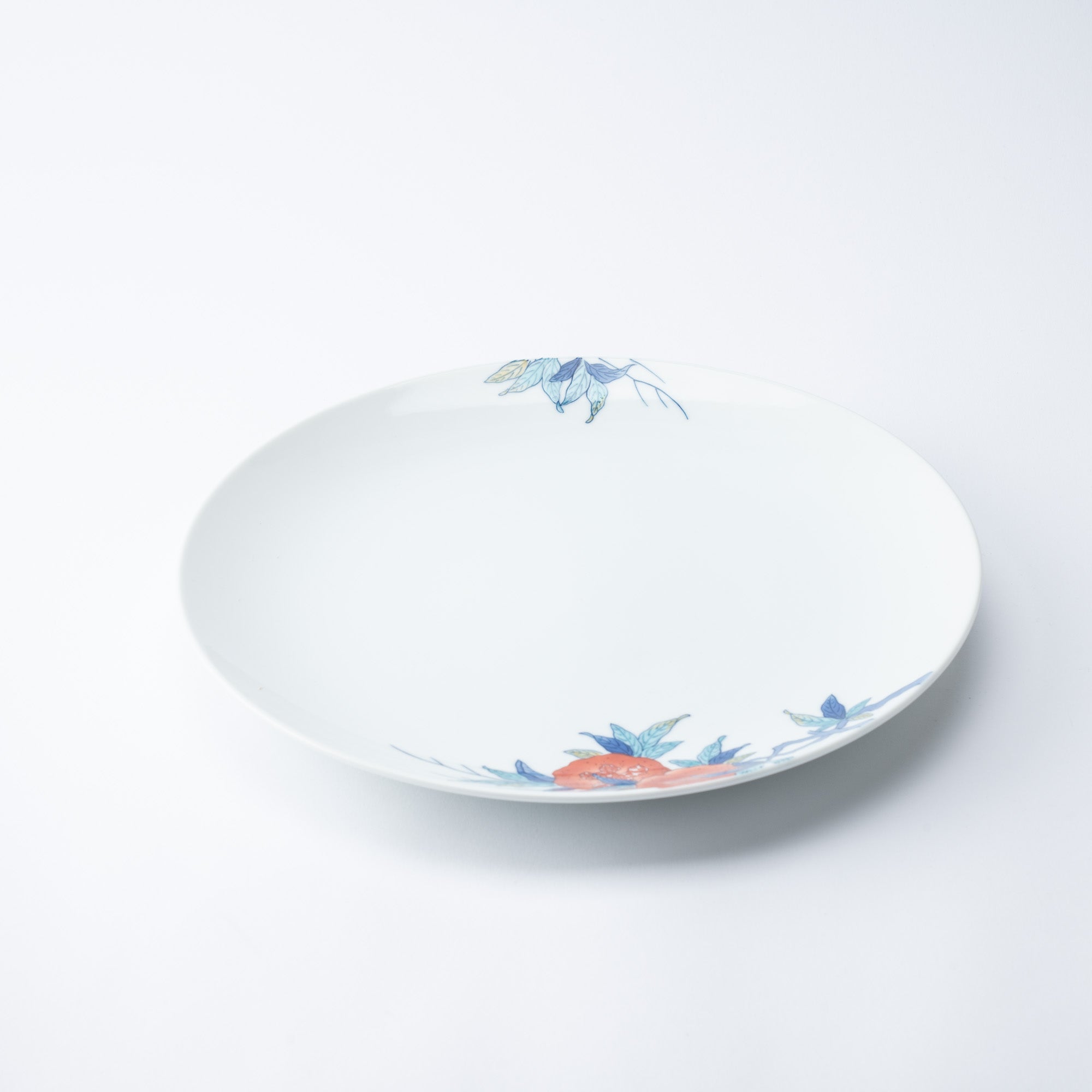
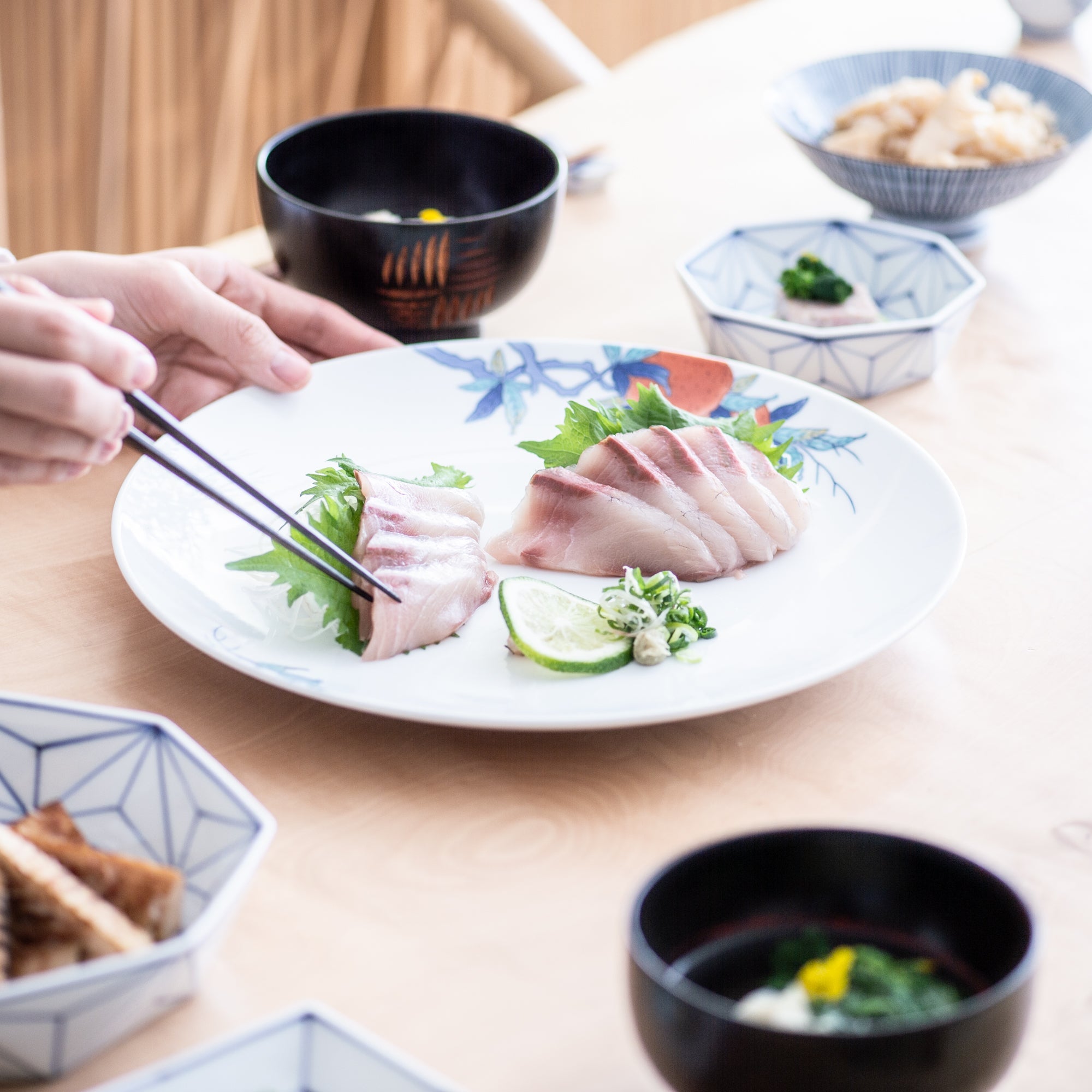




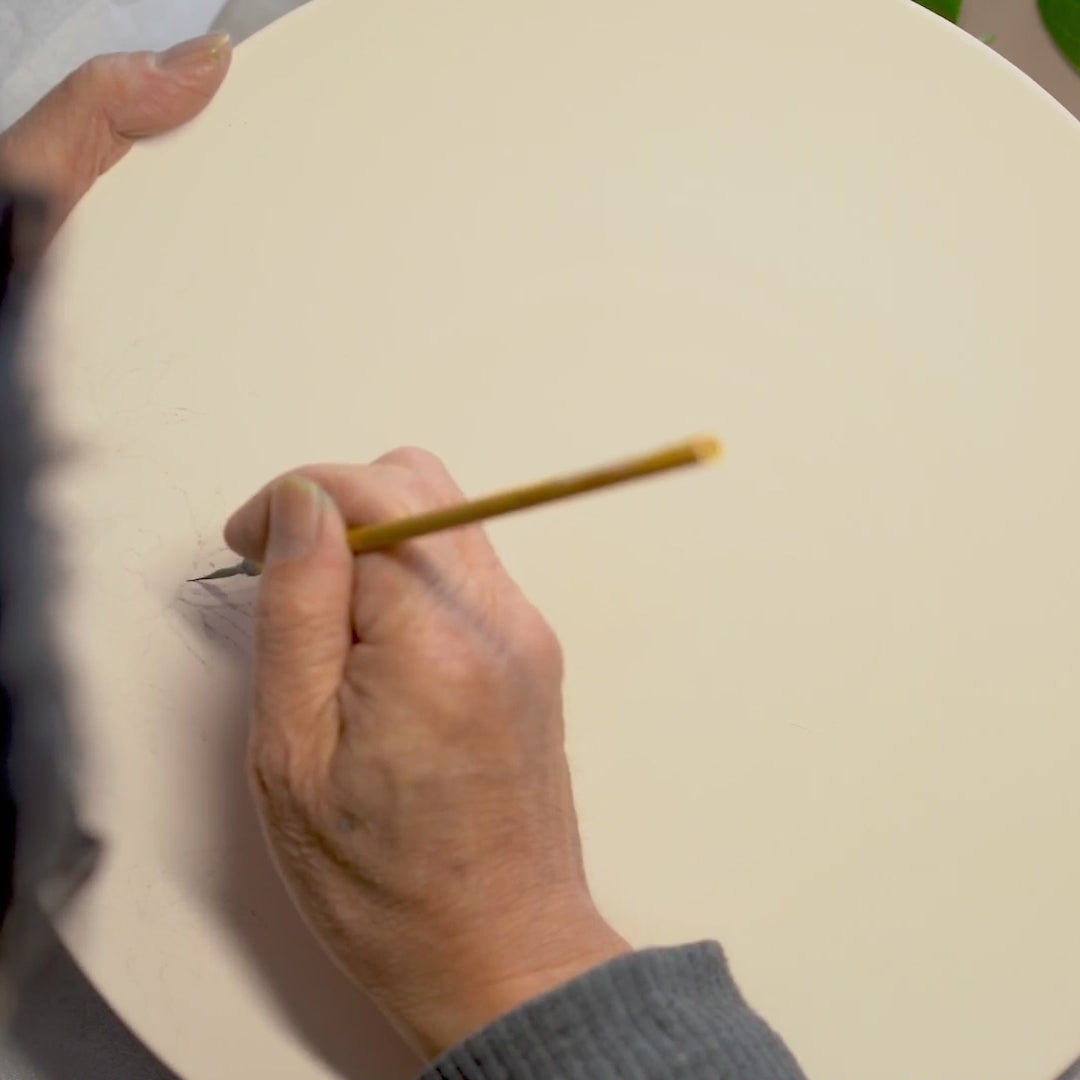
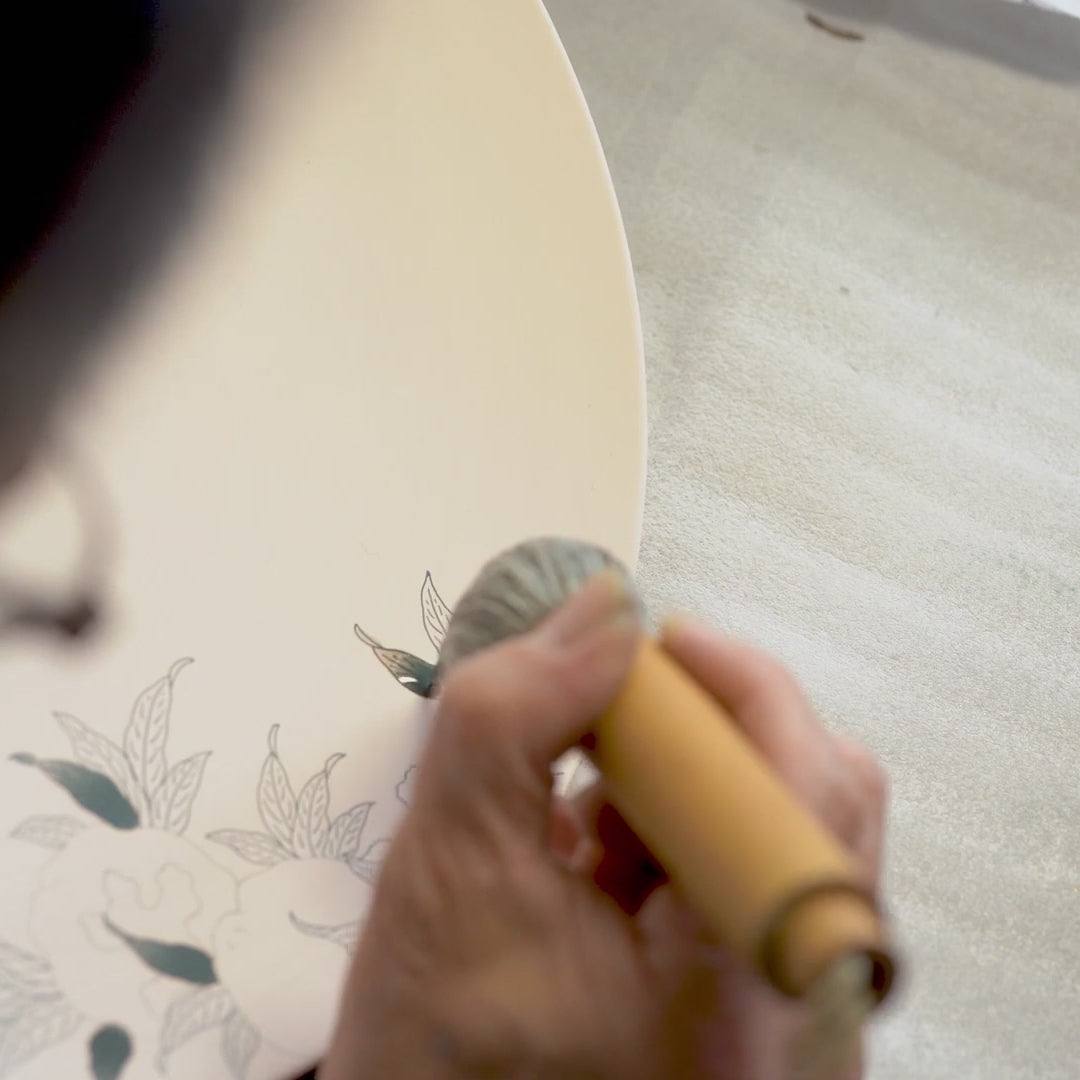
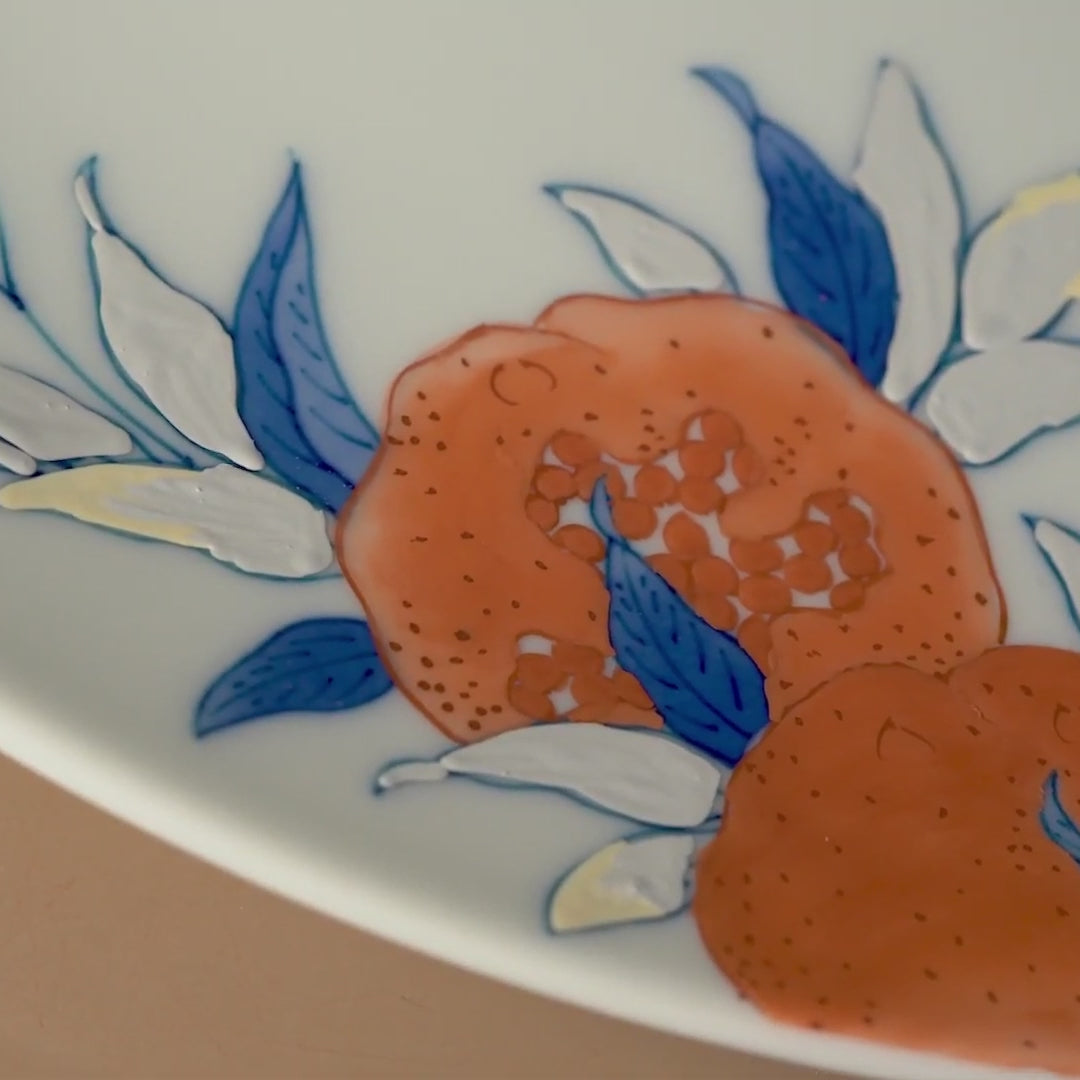







Hataman Touen Iro-Nabeshima Pomegranate Imari Nabeshima Ware Plate 11.4in
Estimated Shipping Widget will be displayed here!
This plate has a beautiful pomegranate design in the Iro-Nabeshima (colored Nabeshima) style on beautiful white porcelain. The pomegranate pattern is one of the most representative patterns of Nabeshima ware.
The white porcelain makes it suitable for any kind of food, but it is also suitable for serving sashimi and appetizers in a gorgeous arrangement.
The plate comes with a sophisticated black box with Hataman logo that is a perfect gift for those who have a passion for interior design and culinary delights.
Originating in Southwest Asia, the pomegranate was introduced to Japan during the Heian period (c.794-1185). In early summer, it produces bright orange-red flowers, and when the fruit ripens in autumn, the thick outer skin breaks open to reveal numerous seeds inside. This appearance is considered a symbol of good fortune and prosperity of offspring, and it has gained popularity.
Iro-Nabeshima has traditional rules, consisting of one color for Sometsuke (Gosu) and three colors for Akae (red, yellow, and green). After outlines are drawn in gosu, red, "kibi" (yellow), and "moe" (green) overglaze painting is applied to the inside. Although it appears that many colors are used, in fact only three colors are used for overglaze painting, a characteristic of Iro-Nabeshima, and its beauty is considered the pinnacle of Japanese porcelain.
Hataman Touen is a company that aims to "create a new Nabeshima" along with passing on the history and traditional craft of Imari Nabeshima ware, which has continued for 370 years. Based on the belief that "traditional crafts can only be inherited if they are closely connected to daily life, "the company offers tableware that enriches the spirit and sensibility in accordance with modern lifestyles.
PRODUCT DETAIL
- Dimension: D29cm(11.4in) x H3.2cm(1.3in)
- Material: Porcelain
- Origin: Made in Japan - Imari Nabeshima Ware
- Brand: Hataman Touen
![]()
Choose options
















Estimated Shipping Widget will be displayed here!
International Shipping
Multiple International Shipping Options
Discounted shipping for over 500000!
Free shipping for over 5000000!
Insured shipping service
Full compensation for any damage during transit.
Made by Japanese craftsmen
Fair Pricing, free Furoshiki wrapping!

